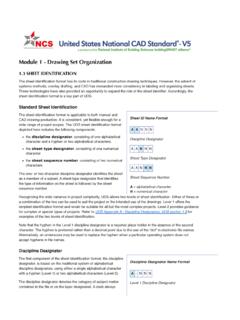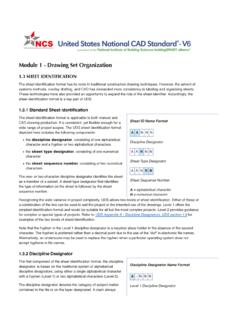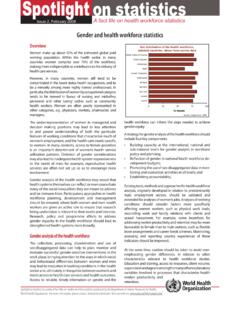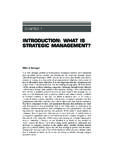Transcription of Implementing ISO 9000 Quality Management System
1 1 Implementing ISO 9000 Quality Management System Implementation of ISO 9000 affects the entire organization right from the start. If pursued with total dedication, it results in 'cultural transition' to an atmosphere of continuous improvement. The process of Implementing ISO 9000 depends on: The sophistication of your existing Quality program, The size of your organization , and The complexity of your process. The 14 essential steps, briefly described below, are to be followed through in order to implement ISO 9000 Quality Management System successfully.
2 Step 1: Top Management commitment Step 2: Establish implementation team Step 3. Start ISO 9000 awareness programs Step 4: Provide Training Step 5. Conduct initial status survey Step 6: Create a documented implementation plan Step 7. Develop Quality Management System documentation Step 8: Document control Step 9. Implementation Step 10. Internal Quality audit Step 11. Management review Step 12. Pre-assessment audit Step 13. Certification and registration Step 14: Continual Improvement Step 1: Top Management Commitment The top Management (managing director or chief executive) should demonstrate a commitment and a determination to implement an ISO 9000 Quality Management System in the organization .
3 Without top Management commitment, no Quality initiative can succeed. Top Management must be convinced that registration and certification will enable the organization to demonstrate to its customers a visible commitment to Quality . It should realize that a Quality Management System would improve overall business efficiency by elimination of wasteful duplication in Management System . The top Management should provide evidence of its commitment to the development and implementation of the Quality Management System and continually improve its effectiveness by.
4 Communicating to the organization the importance of meeting customer as well as statutory and regulatory requirements, Defining the organization 's Quality policy and make this known to every employee, Ensuring that Quality objectives are established at all levels and functions, 2 Ensuring the availability of resources required for the development and implementation of the Quality Management System , Appointing a Management representative to coordinate Quality Management System activities, and Conducting Management review.
5 The top Management should also consider actions such as: Leading the organization by example, Participating in improvement projects, Creating an environment that encourages the involvement of people. This type of top Management commitment may be driven by: Direct marketplace pressure: requirements of crucial customers or parent conglomerates. Indirect marketplace pressure: increased Quality levels and visibility among competitors. Growth ambitions: desire to exploit market opportunities. Personal belief in the value of Quality as a goal and Quality Management systems as a means of reaching that goal.
6 The top Management should identify the goals to be achieved through the Quality Management System . Typical goals may be: Be more efficient and profitable Produce products and services that consistently meet customers' needs and expectations Achieve customers satisfaction Increase market share Improve communications and morale in the organization Reduce costs and liabilities Increase confidence in the production System Step 2. Establish Implementation Team ISO 9000 is implemented by people. The first phase of implementation calls for the commitment of top Management - the CEO and perhaps a handful of other key people.
7 The next step is to establish implementation team and appoint a Management Representative (MR) as its coordinator to plan and oversee implementation. Its members should include representatives of all functions of the organization - Marketing, Design and development, Planning, Production, Quality control, etc. In the context of the standard, the MR is the person within the organization who acts as interface between organization Management and the ISO 9000 registrar. His role is, in fact, much broader than that.
8 The MR should also act as the organization s " Quality Management System champion," and must be a person with: 3 Total backing from the CEO, Genuine and passionate commitment to Quality in general and the ISO 9000 Quality Management System in particular, The dignity - resulting from rank, seniority, or both - to influence managers and others of all levels and functions, Detailed knowledge of Quality methods in general and ISO 9000 in particular. The members of the implementation team should also be trained on ISO 9000 Quality Management systems by a professional training organization .
9 Step 3. Start ISO 9000 Awareness Programs ISO 9000 awareness programs should be conducted to communicate to the employees the aim of the ISO 9000 Quality Management System ; the advantage it offers to employees, customers and the organization ; how it will work; and their roles and responsibilities within the System . Suppliers of materials and components should also participate in these programs. The awareness program should emphasize the benefits that the organization expects to realize through its ISO 9000 Quality Management System .
10 The program should also stress the higher levels of participation and self-direction that the Quality Management System renders to employees. Such a focus will go far to enlist employee support and commitment. The programs could be run either by the implementation team or by experts hired to talk to different levels of employees. Step 4. Provide Training Since the ISO 9000 Quality Management System affects all the areas and all personnel in the organization , training programs should be structured for different categories of employees - senior managers, middle-level managers, supervisors and workers.







